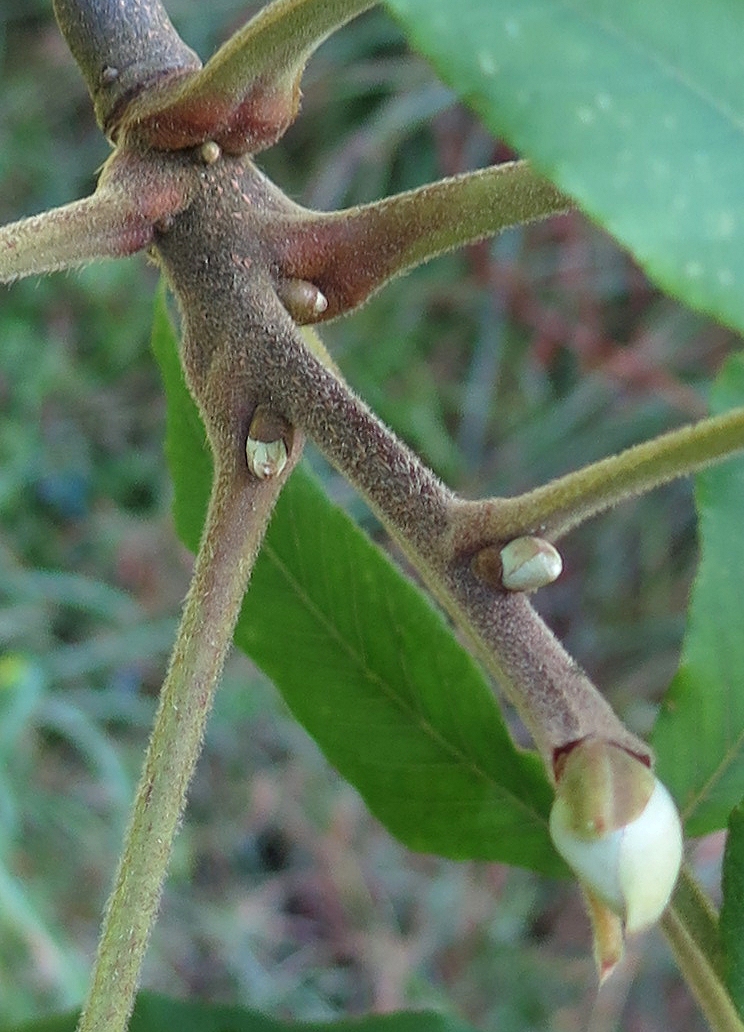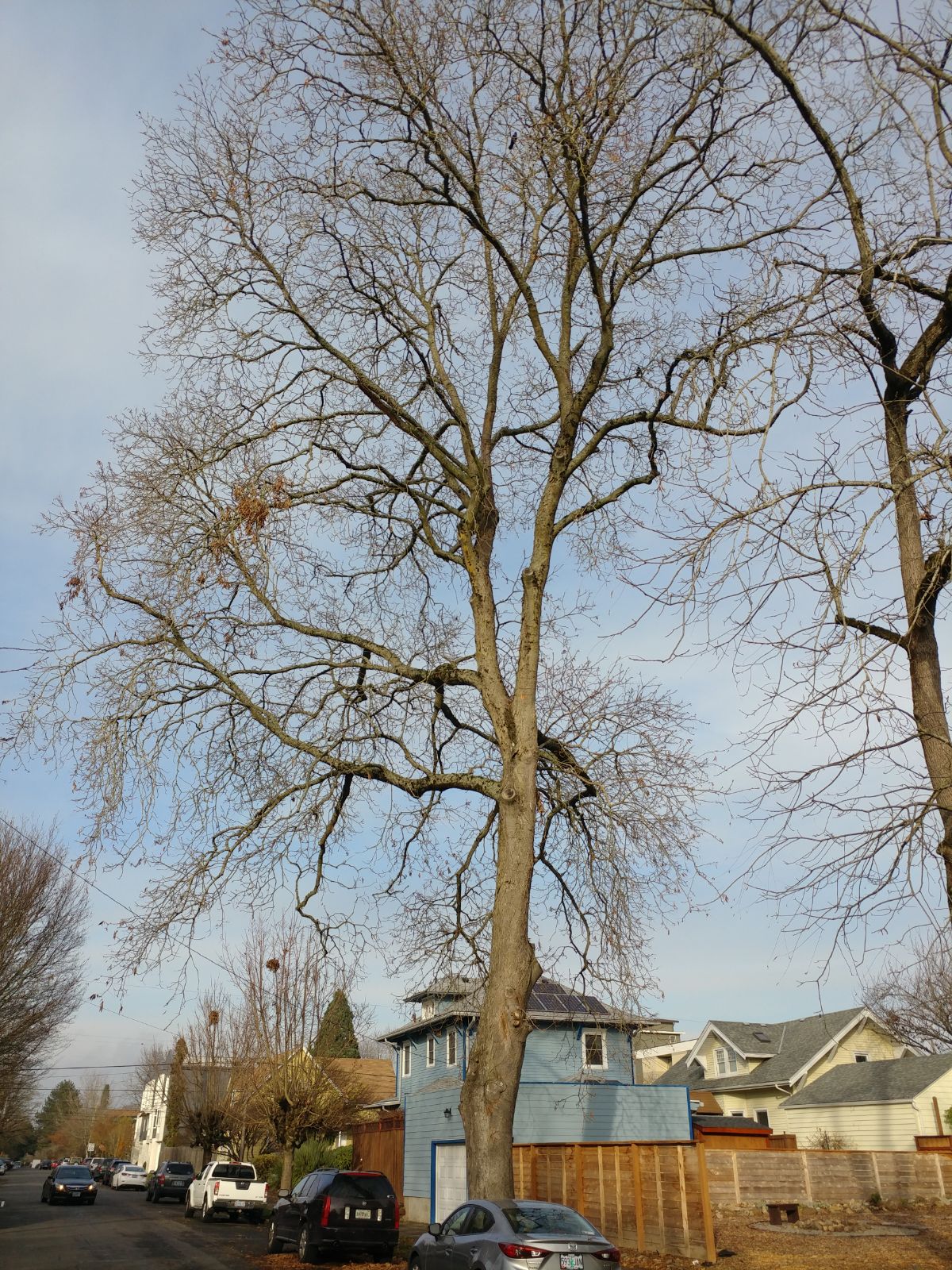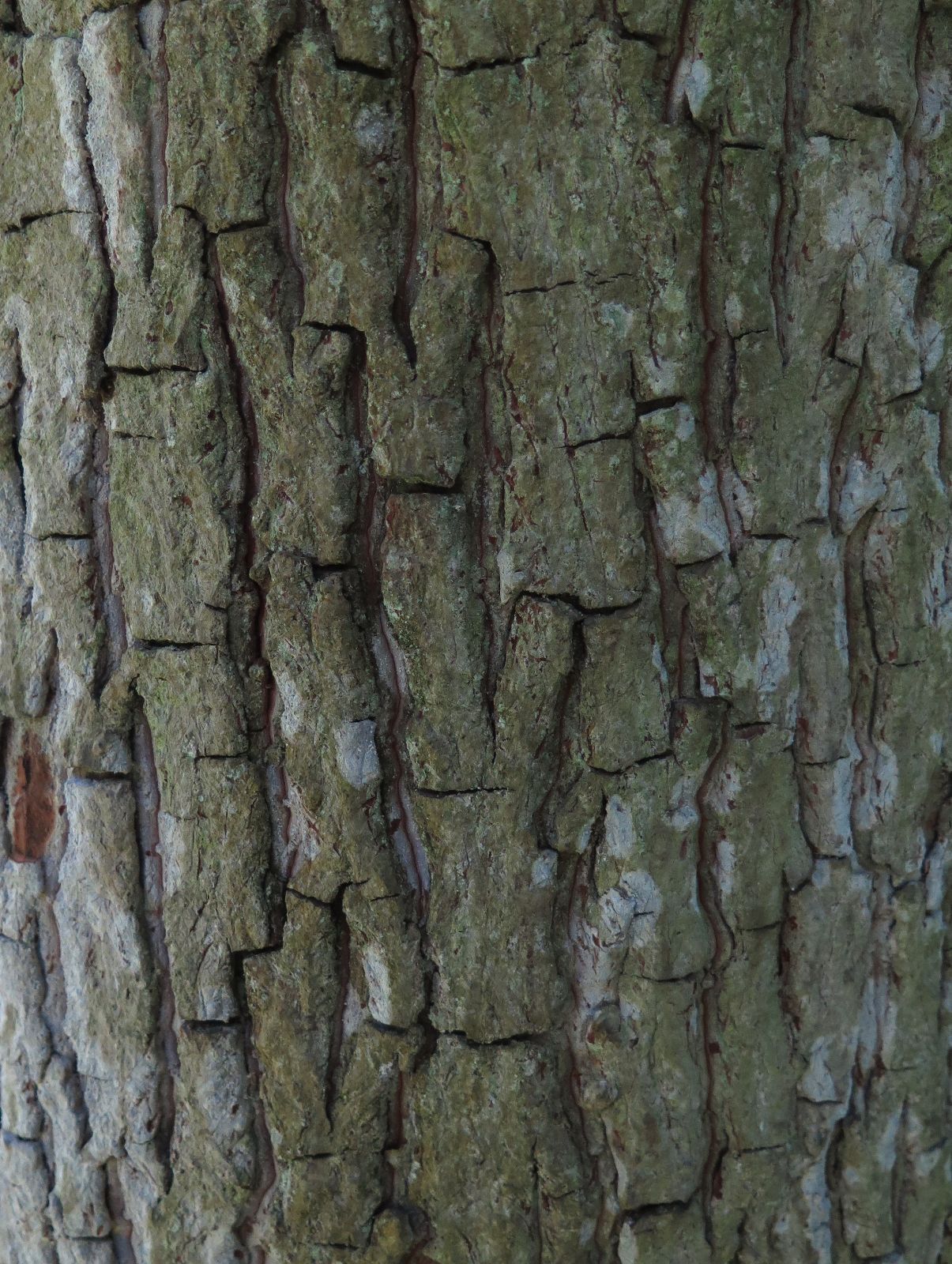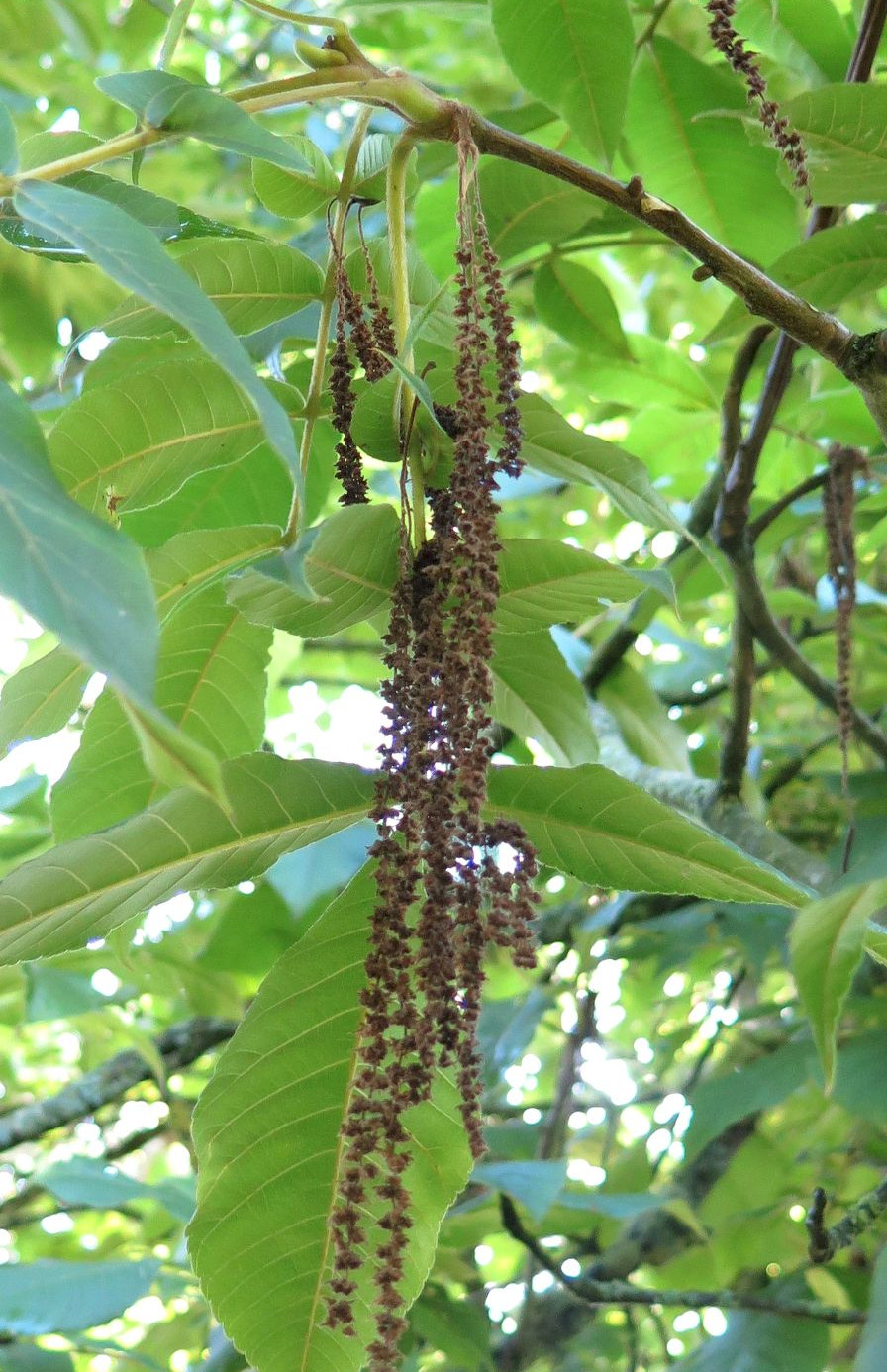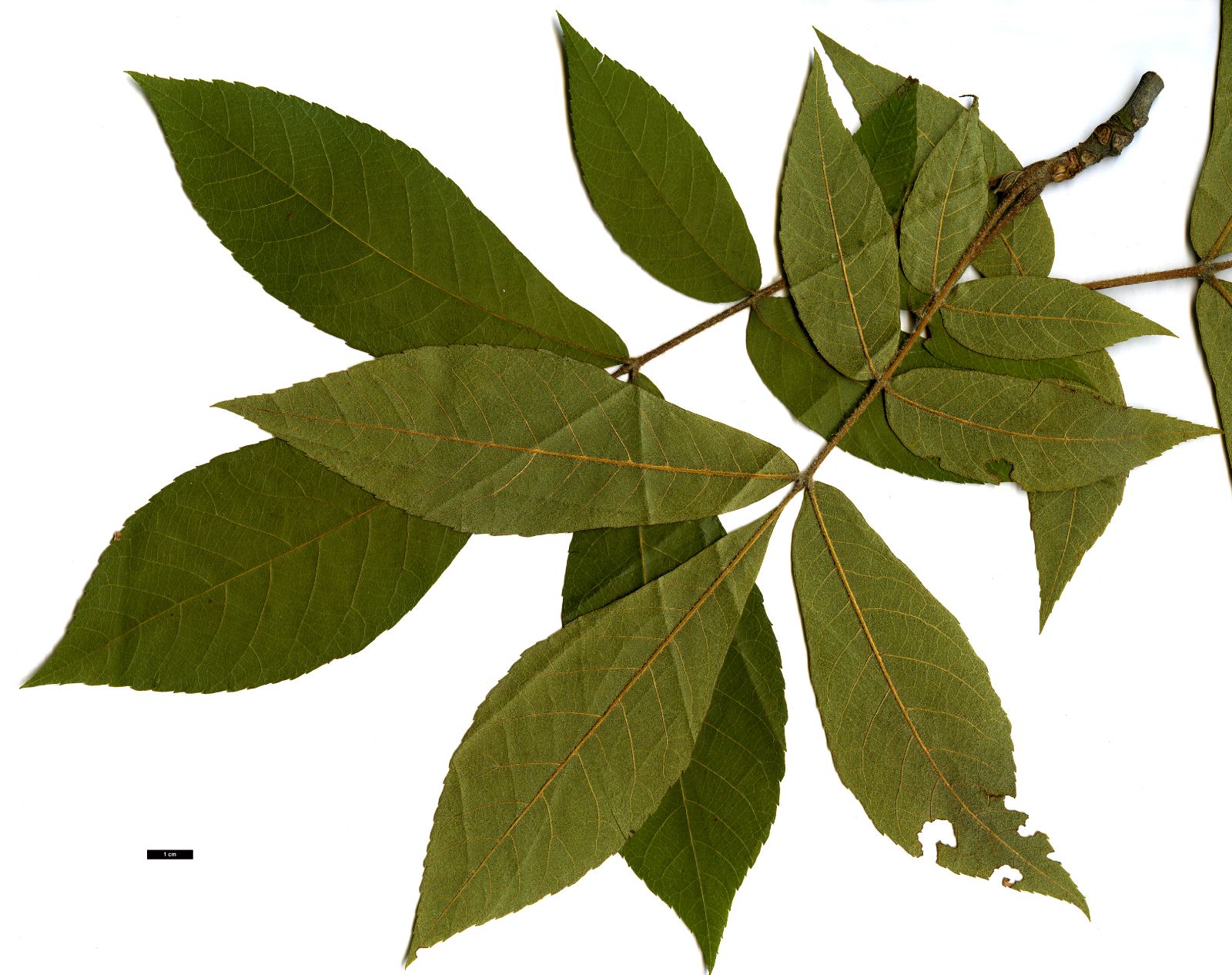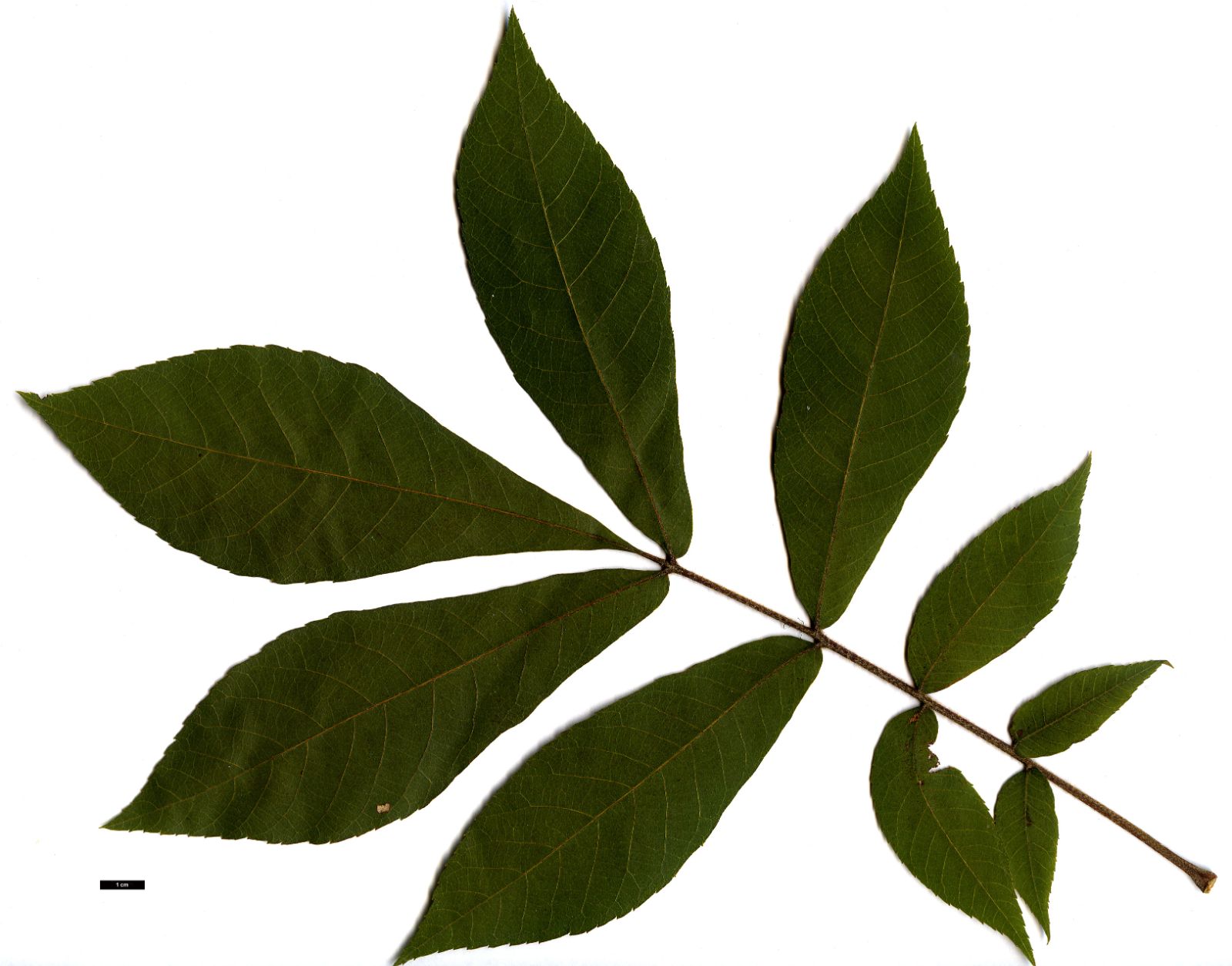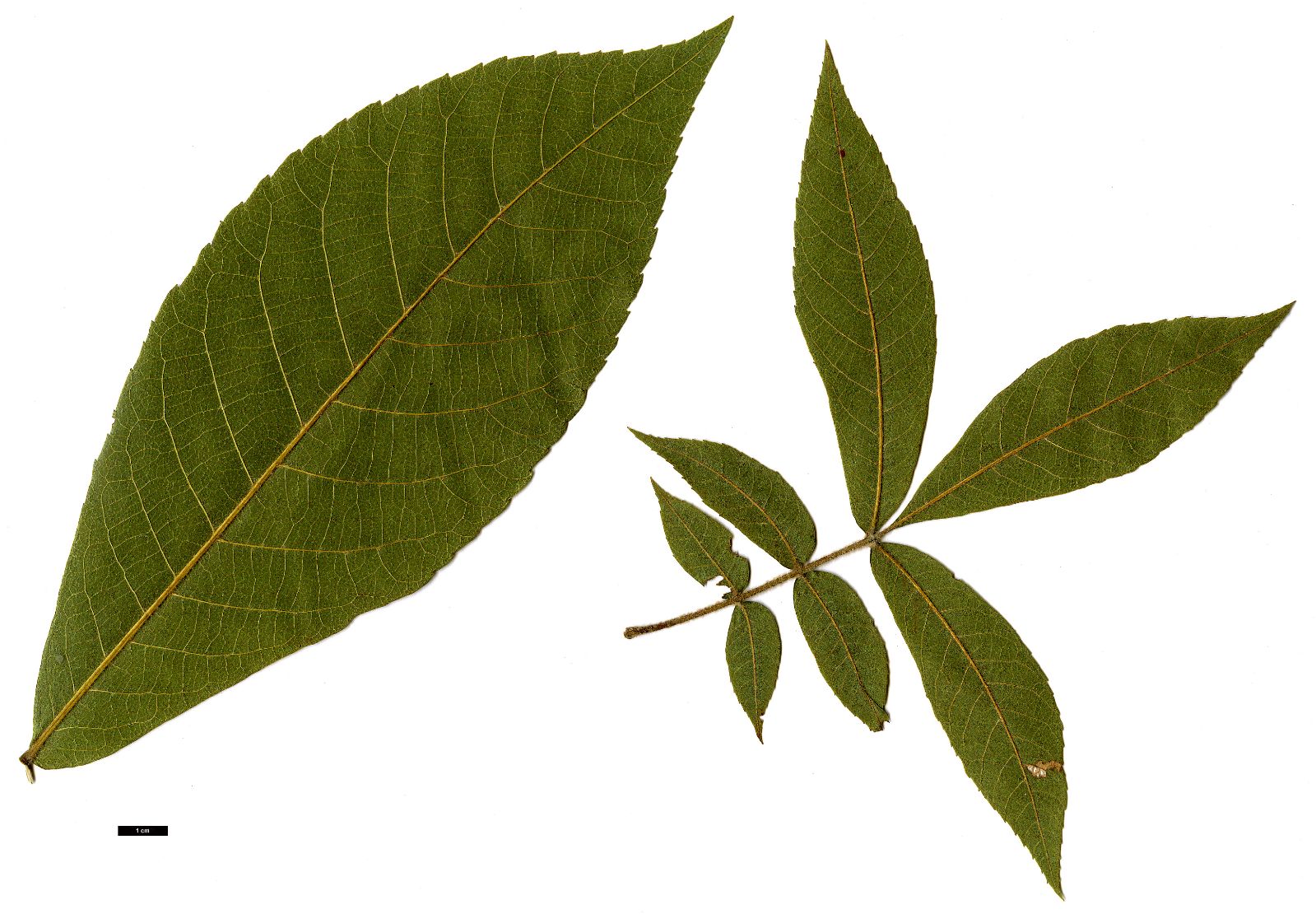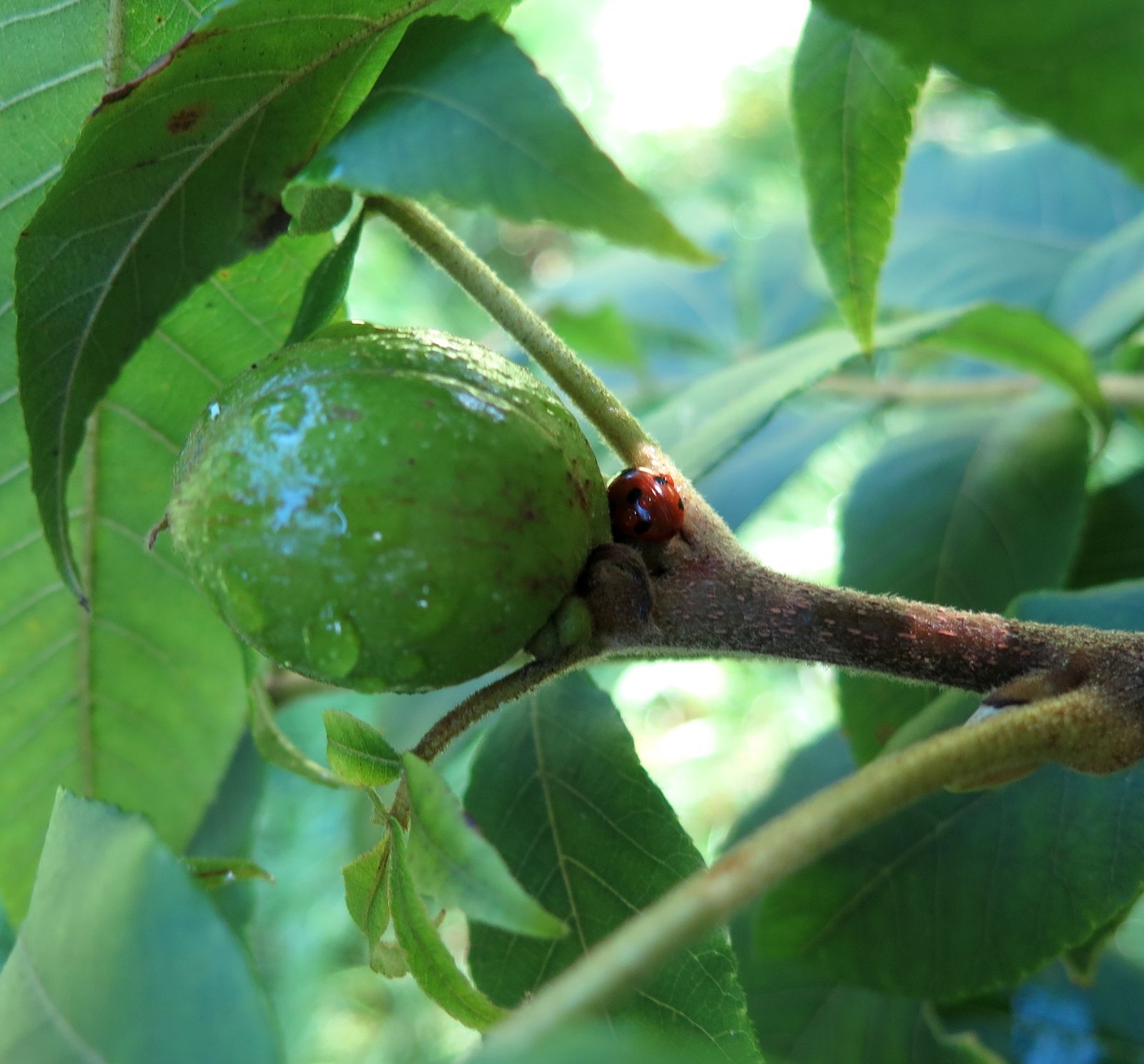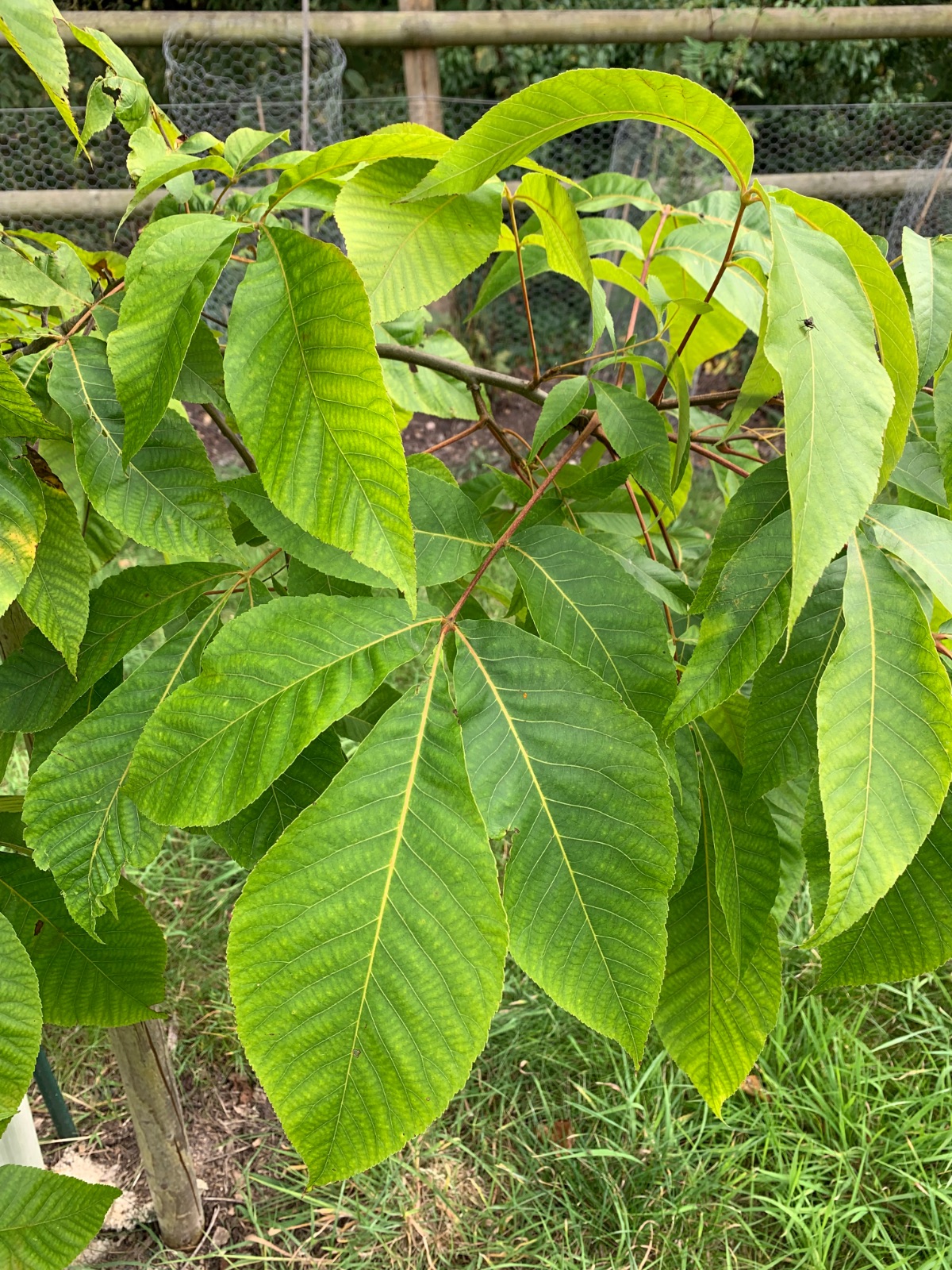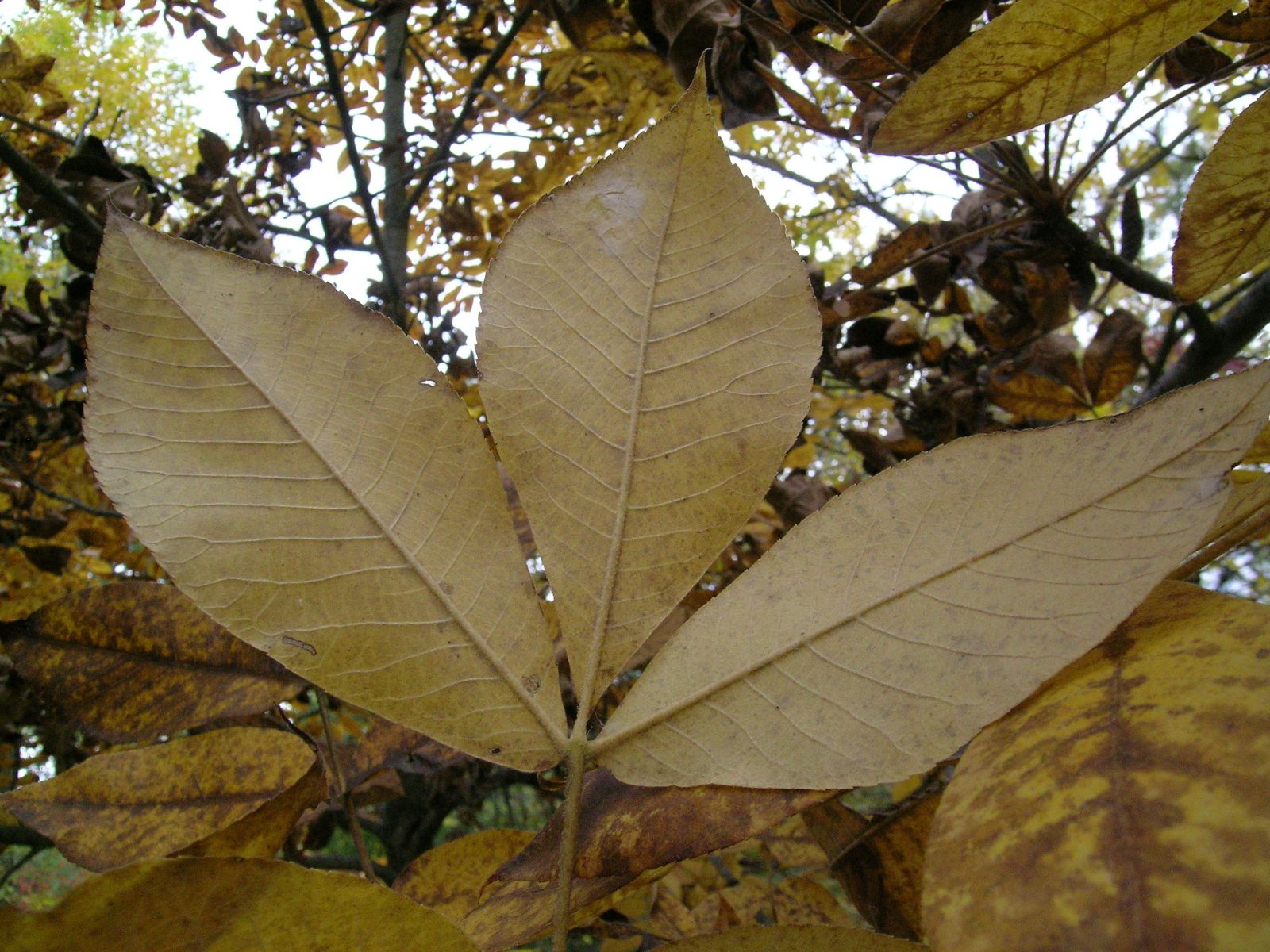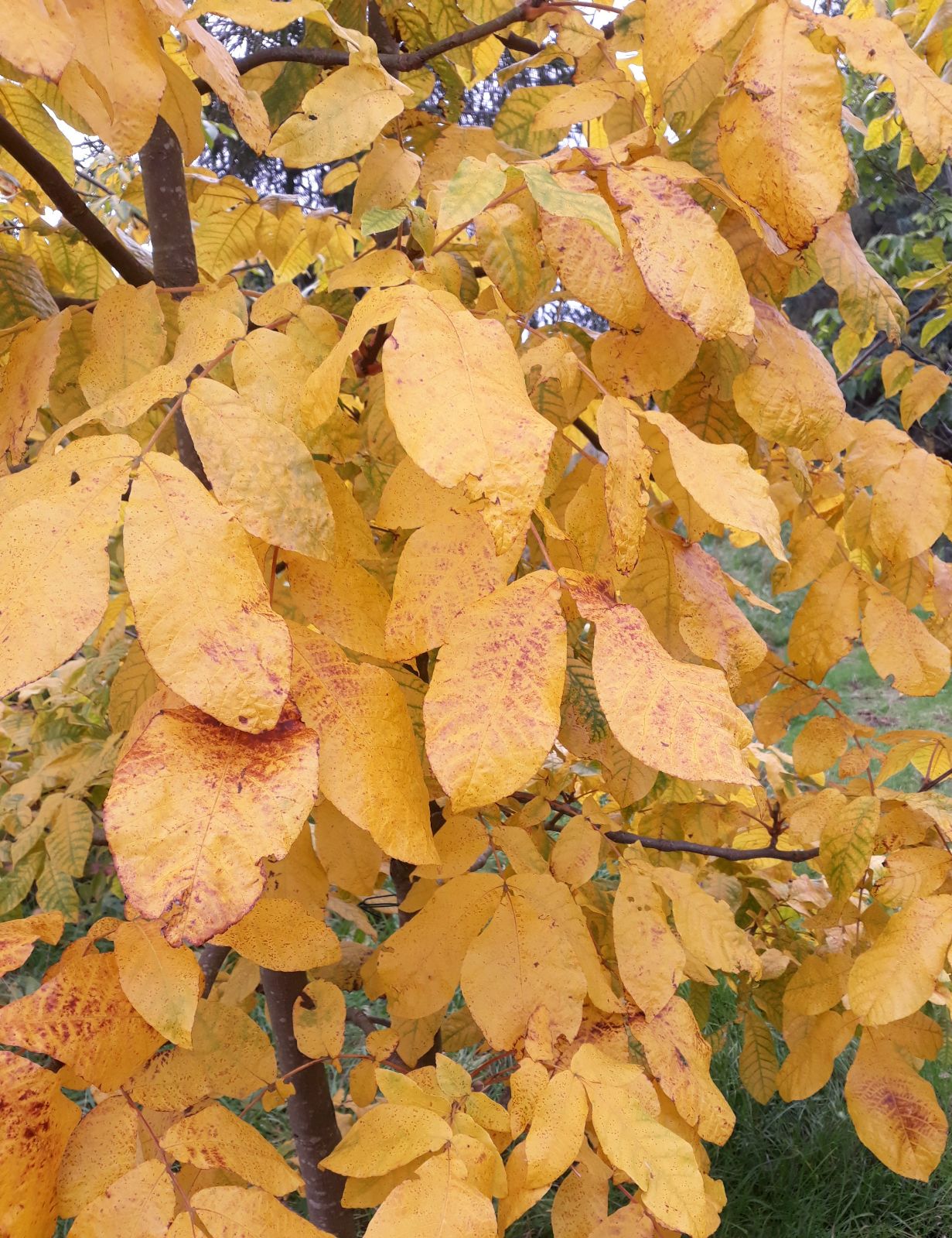Carya tomentosa
Sponsor
Kindly sponsored by
a member of the International Dendrology Society
Credits
Julian Sutton & Dan Crowley (2020)
Recommended citation
Sutton, J. & Crowley, D. (2020), 'Carya tomentosa' from the website Trees and Shrubs Online (treesandshrubsonline.
Genus
Common Names
- Mockernut Hickory
- White Hickory
Synonyms
- Juglans tomentosa Poir.
- Carya alba (L.) K. Koch nom. ambig.
Large tree to 36 m in the wild. Bark dark grey, fissured or ridged, not exfoliating. Branchlets reddish-brown, stout, hairy and scaly. Terminal bud 0.5–1 cm long, tan (after early loss of outer scales). Leaves deciduous, imparipinnate, 20–30 cm long (up to 50 cm on vigorous, young trees); leaflets (5–)7–9, ovate to elliptic or obovate, 4–19 × 2–8 cm, upper surface hirsute along midrib and primary veins, puberulent with armed hairs and scales at first. Lower surface hirsute with 2–8-armed hairs, and with many large and small round peltate scales. Margins finely to coarsely serrate, apex acute to acuminate; lateral petiolules 0–0.2 cm long, terminal petiolules 0.2–1.3 cm long ; petiole and rachis hirsute with large and small peltate scales; petiole 3–12 cm long. Male catkins to 14 cm long, hirsute, scaly. Fruits reddish-brown, 3–4 × 2–3 cm, obovoid to globose, not compressed or compressed, splitting to the middle or nearly to base; nuts finely wrinkled. (Stone & Whittemore 1997; Whittemore 2013).
Distribution United States Eastern states from New York and southeastern Iowa south to Florida and eastern Texas
Habitat Well-drained sandy soils, rolling hills and rocky hillsides, occasionally on limestone outcrops; 0–900 m.
USDA Hardiness Zone 4-9
RHS Hardiness Rating H5
Conservation status Least concern (LC)
A true hickory, the Mockernut is the commonest species in Virginia and North Carolina, although it tends to grow larger east of the Appalachians. Long-lived in the wild, 500 year old trees have been recorded (Smith 1990). A most handsome tree at its best, it tends to produce the narrow crown typical of hickories even when given space, although broadly rounded crowns are known (Dirr 2009). It gives good yellow to yellow-brown autumn colours but is rarely cultivated in North America (Jacobson 1996) and ‘too much neglected’ in the United Kingdom (Bean 1976).
The ambiguous name Carya alba is still occasionally seen (i.e. Lance 2004). This name is based on Juglans alba L., whose protologue ultimately refers to specimens of what are now recognised as two quite distinct species, C. tomentosa and C. ovata. There is no good reason to continue using the name for either species (Stone & Whittemore 1997) and few do.
Like Carya laciniosa, the species has large winter buds, but its bark does not exfoliate. The notably tomentose leaflets, rachis and branchlets are characteristic and are the origin of the specific epithet. The leaves, with seven to nine leaflets, are particularly strongly fragrant. Like other members of the Juglandaceae, the scent is strongest when leaves are rubbed but Bean (1976) notes that on dewy, summer mornings it can be detected from some distance away. The bark rather resembles C. cordiformis, but the terminal buds are of a quite different type. In C. tomentosa they have imbricate scales; the outer scales tend to fall away in winter revealing the buff, silkily hairy inner scales (Grauke 2003).
Like other true hickories, Carya tomentosa yields a valuable, strong timber used in tool handles, furniture and as firewood. It is one of several candidates for being the best meat-smoking hickory (Smith 1990). The nuts are not bitter yet are rarely eaten by humans, perhaps because the shell is very thick, even by the standards of hickories. Despite this, one cultivar – ‘Droska’ – was named in 1929 (Grauke 2003). Birds and rodents, especially squirrels, take the nuts, increasing the range of dispersal (Smith 1990).
Introduced to the United Kingdom in 1766 (Armitage et al. 2014), there are a number of large, older specimens including several at Westonbirt, Gloucestershire and a good straight tree in the University Parks, Oxford, measured at 26 m × 56 cm in 2014 (The Tree Register 2019). Almost all these older trees are in southern England. A relative youngster planted at Howick Hall, Northumberland in 1988, from WAHO 99 has established well (9 m × 18 cm in 2019), showing both that the species can thrive in the north and that new introductions continue to be made.
Several larger specimens are recorded in Germany, including one at the Botanischer Garten Bonn, planted about 1840 and 32 m tall by 2014 (monumentaltrees.com 2019). Beyond its native range, Mockernut is rarely seen in North America although it can clearly thrive in the Pacific Northwest. A broad-crowned, 18 m tall specimen in suburban Portland, Oregon, may be the only example in that city, which is blessed with many good street trees (Portland Parks & Recreation 2019).
Mockernut shares the hickory trait of slow establishment (Smith 1990), and the usual difficulties around transplanting these tap-rooted trees apply.

